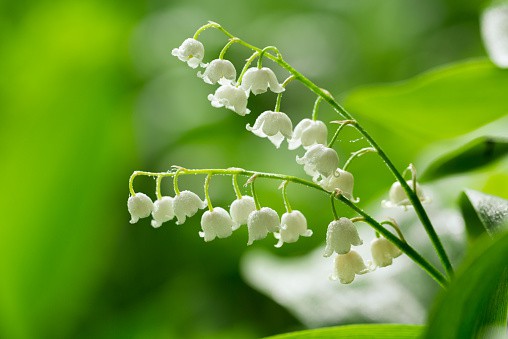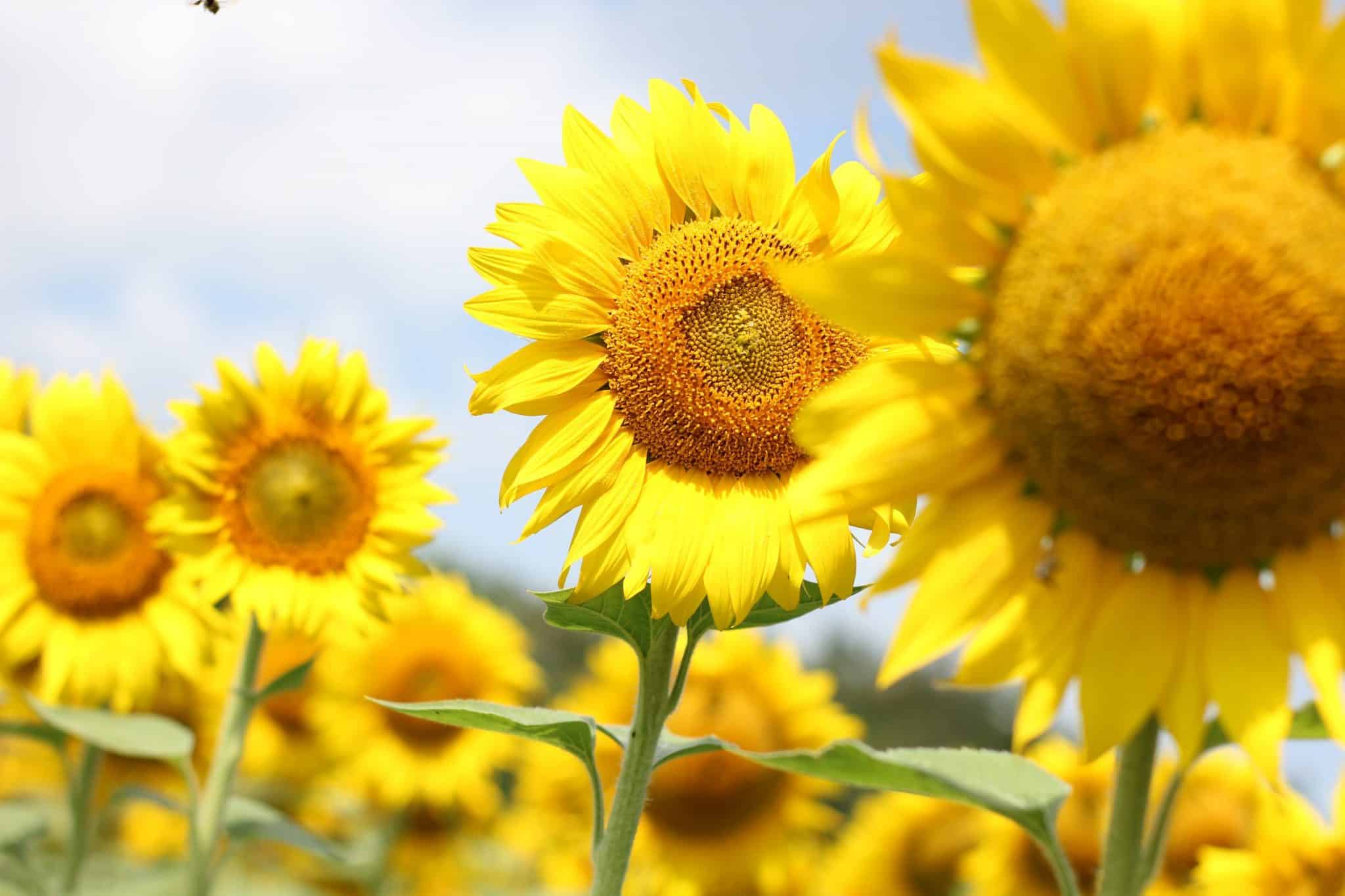Lily of the Valley, also known as Convallaria majalis, is a low-growing perennial that produces arching stems lined with sweetly-scented bell-shaped flowers. Its lush green foliage and bright white blooms have long been admired as a favorite naturalizing ground cover. Whether tucked beneath a shady tree or planted en masse in a wildflower garden, this charming flower adds a touch of beauty just about anywhere.
Etymology
The name Convallaria majalis is derived from the Latin word convallis, meaning “valley,” and the Greek word makalos, meaning “wet.” This is due to the flower’s preference for moist, shady conditions. It is also sometimes referred to as “Our Lady’s tears” due to the flower’s tear-drop shape, which is said to represent the tears of the Virgin Mary when her son Jesus was crucified. Additionally, its resemblance to a lily of the valley has earned it its popular name.
Meaning and Symbolism
The lily of the valley is a symbol of sweetness, humility and determination. It is thought to bring luck, renewal, and protection. It is also a token of purity and innocence.
In French culture, it carries a special significance as the national flower of France, standing as a symbol of hope and rejuvenation.
History, Mythology, and Religious Significance
Lily of the valley has a long and fascinating history, dating back centuries. It was used as a medicinal herb in traditional European medicine. In the Bible, lily of the valley is believed to have been mentioned in the Song of Solomon, in reference to the bride’s beauty. For centuries, it has been a popular flower to give as a gift on the feast of St. Valentine in Britain.
Flower Varieties and Their Defining Characteristics
Lily of the valley come in two primary varieties:
Convallaria majalis and Convallaria polygonata.
Both produce cup-shaped white flowers, however, polygonata has large, triangle-shaped leaves, while majalis has small, heart-shaped leaves.
Buy very Large, Plump Lily of The Valley on Amazon>>
How to Plant
Lily of the valley prefers moist, rich soil and thrives in partial or full shade. It prefers temperatures between 55°F to 70°F and does best in soil with a pH of 6.0 – 7.0. To ensure proper drainage, it is best planted in areas with good air circulation. Plant the crowns of the lily of the valley 1-2 inches deep and space the plants 3-5 inches apart. Water deeply and keep the soil evenly moist until they are established.
Fertilizing is not necessary, but a light side-dressing of compost may help keep the mossy growth in check. Mulching helps hold in moisture and should be used in moist climates.
How to Pot and Repot
Lily of the valley are easy to grow and make great houseplants. Pot in a well-draining soil mixture and keep it evenly moist, but not soggy. For repotting, use a nutrient rich planting mix with lots of organic matter.
How to Prune
Lily of the valley should not need much pruning, but a light yearly pruning will help keep the growth full and dense. Prune the stems at the base after flowering to induce branching and fuller growth.
How to Propagate
Propagate lily of the valley by dividing established clumps or from seed. Separate the plants in the spring after flowering or sow the seeds in the fall. Lily of the valley can take several years to become established.
Common Pests and Diseases
Lily of the Valley generally have few pest and disease problems. Aphids and slugs can discolor the leaves, but these pests can be easily controlled with a light application of insecticidal soap. In some cases, plants may suffer from root rot or mildew due to over-watering.
Frequently Asked Questions
Q: What is the best way to propagate Lily of the Valley?
A: The best way to propagate Lily of the Valley is by dividing established clumps or from seed. Separate the plants in the spring after flowering or sow the seeds in the fall.
Q: What kind of environment does Lily of the Valley need to thrive?
A: Lily of the Valley prefers moist, rich soil and thrives in partial or full shade. It prefers temperatures between 55°F to 70°F and does best in soil with a pH of 6.0 – 7.0. To ensure proper drainage, it is best planted in areas with good air circulation.
Q: Does Lily of the Valley prefer sun or shade?
A: Lily of the Valley prefers partial or full shade and does best in soil with a pH of 6.0 – 7.0.
Fact Sheet
| Common Name | Lily of the Valley |
|---|---|
| Scientific Name | Convallaria majalis |
| Family | Asparagaceae |
| Plant Type | Herbaceous perennial |
| Mature Size | 6-8 inches tall, 12 inches wide |
| Sun Exposure | Partial to full shade |
| Soil Type | Moist, well-drained soil |
| Soil pH | Acidic to neutral (5.0-7.5) |
| Bloom Time | Late spring to early summer |
| Flower Color | White |
| Hardiness Zones | 2-7 |
| Native Area | Europe and Asia |
Note: Lily of the Valley is toxic if ingested, so it should be planted with caution around children and pets.
What we love from Amazon this week
Buy these wonderful flowers directly from Amazon:
















